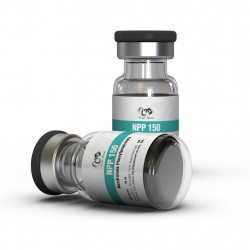


First brought to market in 1957 as Durabolin by Organon (now Merck/MSD), its therapeutic applications have evolved. Initially used for postoperative lean mass preservation and osteoporosis treatment, it now primarily targets advanced metastatic breast cancer and osteoporosis in older adults.Nandrolone phenylpropionate is an injectable anabolic steroid known for its ability to improve strength and support lean muscle gains. Athletes and bodybuilders find its characteristics appealing as it helps improve performance without the effects of high androgenic or estrogenic impacts. recognised to be beneficial, for treating conditions such as severe injuries and specific types of anemia This versatility makes it a popular option in sports, as medical fields.
Llewellyn, W. (2017). William Llewellyn's Anabolics.
United States: Molecular Nutrition, LLC.
Disclaimer: Information provided it this page is for general information only and does not substitute for professional medical advice.
For detailed information about NPP 150 by Dragon Pharma, consult with your doctor or healthcare professional.


Llewellyn, W. (2017). William Llewellyn's Anabolics.
United States: Molecular Nutrition, LLC.

Llewellyn, W. (2017). William Llewellyn's Anabolics.
United States: Molecular Nutrition, LLC.

Llewellyn, W. (2017). William Llewellyn's Anabolics.
United States: Molecular Nutrition, LLC.